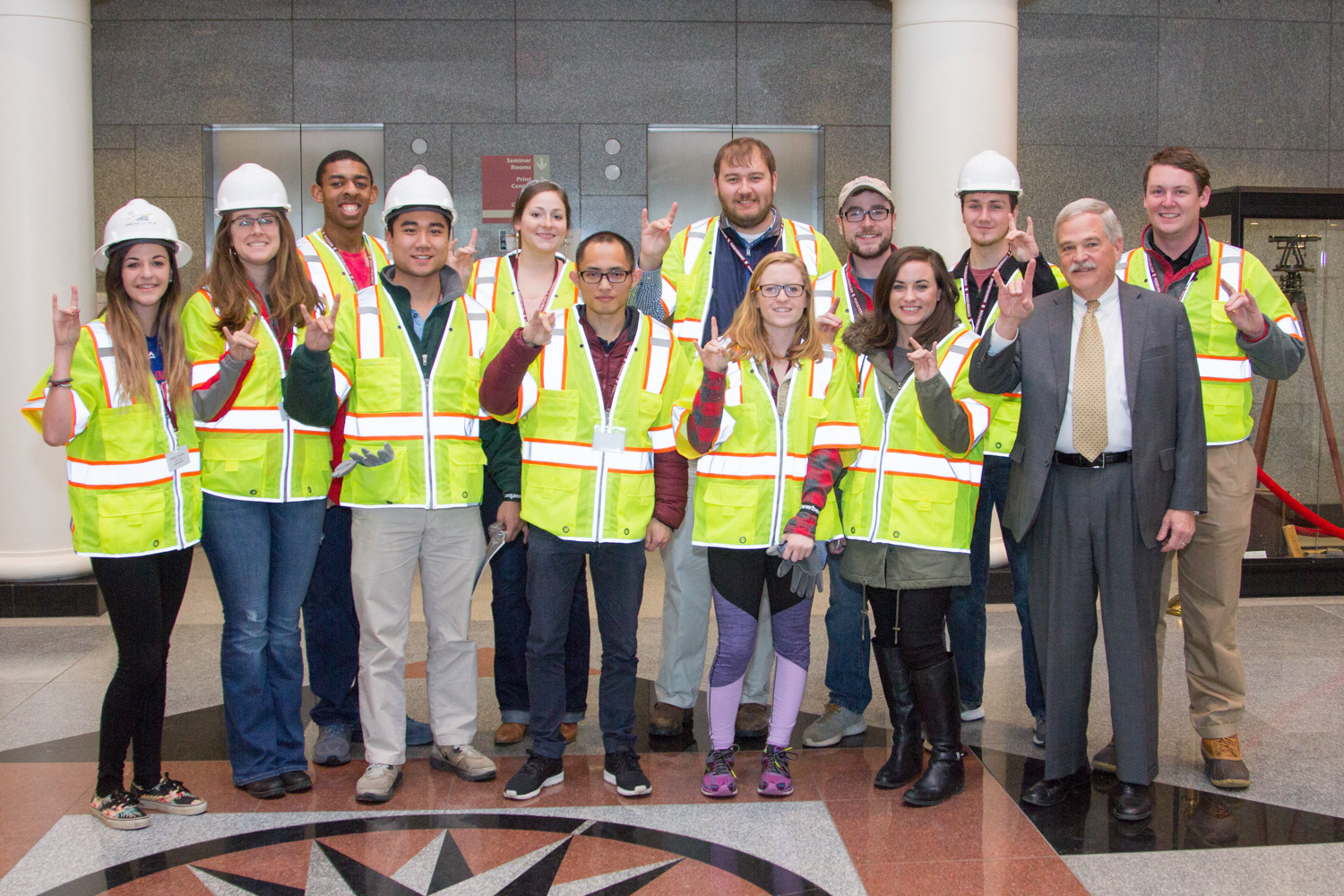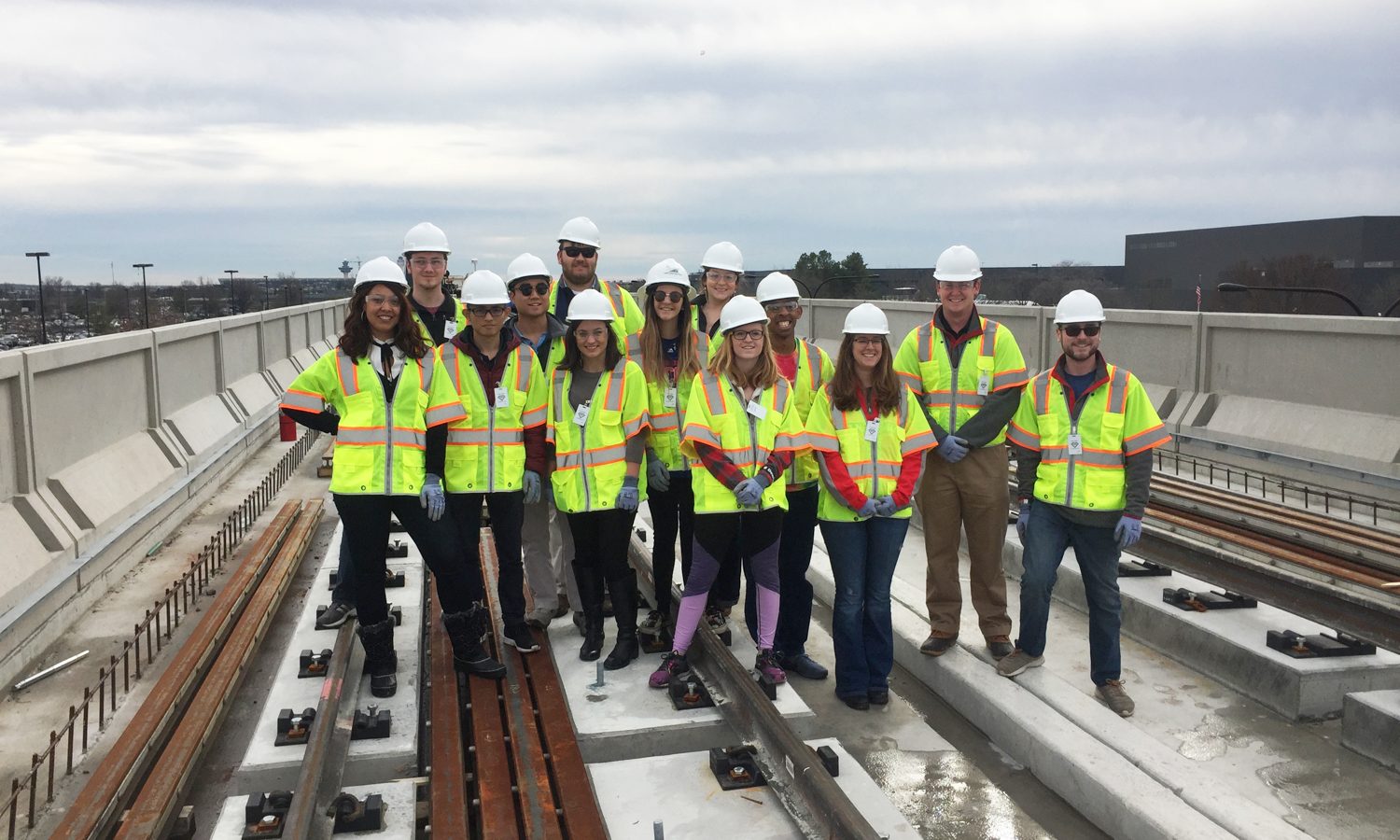On January 11, twelve CCEE students toured the Washington, DC, metrorail project, which is currently under construction. The Dulles Silver Line tour was organized by Dewberry and its COO Dan Pleasant (BSCE 1972, MCE 1973), who serves on the CCEE Department Advisory Board. The visit was organized to coincide with the annual meeting of the Transportation Research Board (TRB) held in January in Washington, DC. The twelve students are members of the joint student chapter for three transportation student organizations known as ITE-ASHE-AREMA. The three organizations are the Institute of Transportation Engineers (ITE), the American Society of Highway Engineers (ASHE) and the American Railway Engineering and Maintenance-of-Way Association (AREMA).
The rail line project extends the Silver Line Metrorail to Dulles International Airport and into Loudoun County, Virginia. It is one of the largest infrastructure projects on the Eastern Seaboard, with construction costs of $1.5 billion. The project includes more than 11 miles of track, five new at-grade stations, and one new elevated station at the airport. “After the presentation, engineers from Dewberry gave us a behind-the-scenes tour all along the project,” said Jordan Rosenfeld, Vice-President of ITE-ASHE-AREMA. “As we went from site to site within the project, I came to realize just how large a project this is. Each station was a large project itself. It also made me think about how different aspects of civil engineering such as structures, transportation, and environmental all have to work together – and how they have to interact with so many outside organizations.”

Dewberry is a major subconsultant to the design lead on the design-build team of Capital Rail Constructors, a joint venture of Clark and Kiewit. Dewberry’s services on the design-build team include: architectural design; building structures and mechanical, electrical and plumbing (MEP) for the five at-grade stations; pedestrian bridges; and wayside facilities including traction power substations; roadway design for 5.5 miles of roadway reconstruction; bridge structural design for three line bridges; track retaining walls; environmental/permitting; erosion and sedimentation control; stormwater management; and landscape architecture. Construction is scheduled to be completed in 2020.
“One of the engineers we got to talk to has been working on this project for eleven years,” said Ph.D. student Elizabeth Williams (BSCE 2014, MCE 2016), the President of ITE-ASHE-AREMA. “I’ve been to the TRB annual meeting several times, but this is the first time we’ve had a field trip attached. We were offered the trip by Dan Pleasant, and it was extremely informative.”

